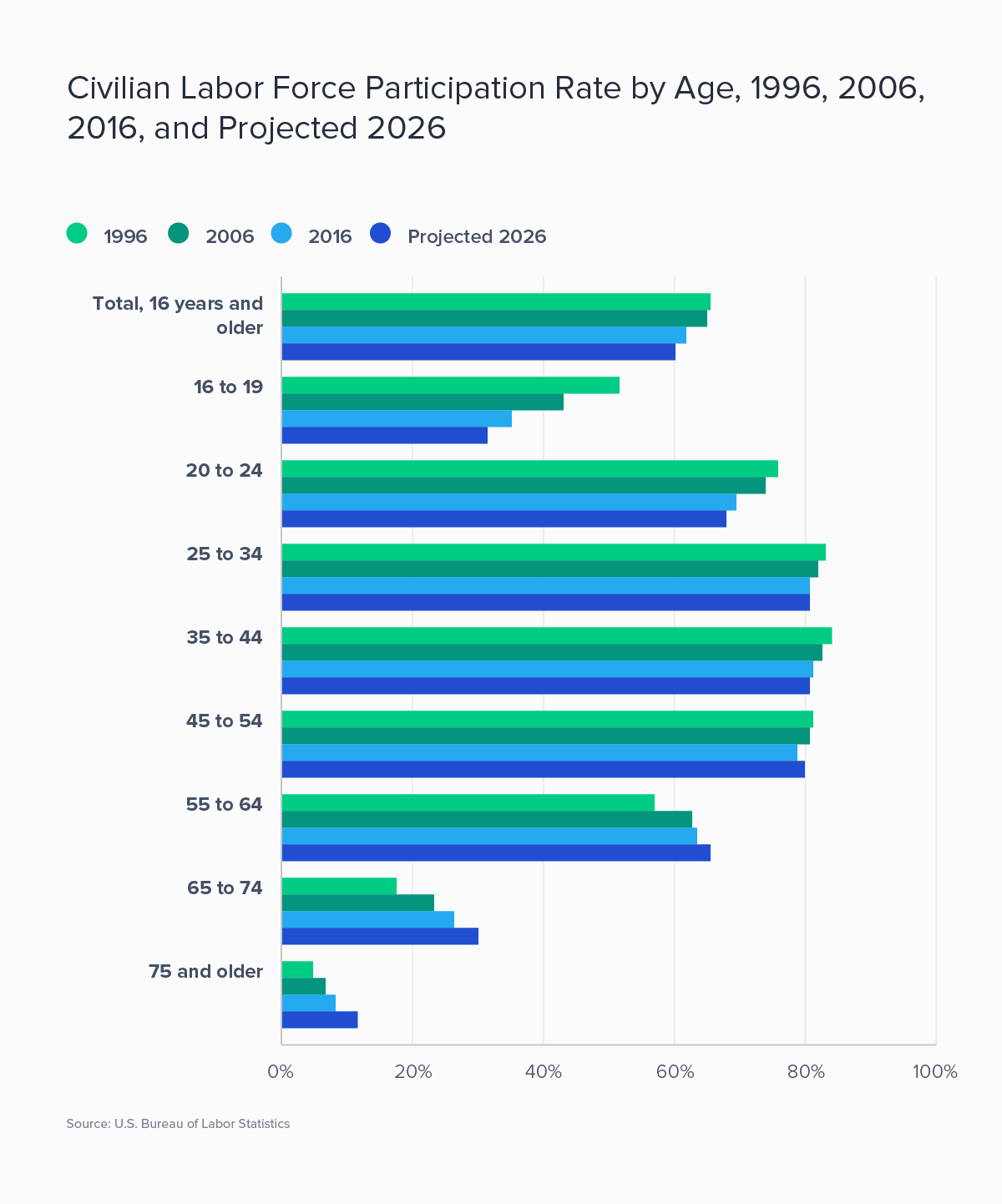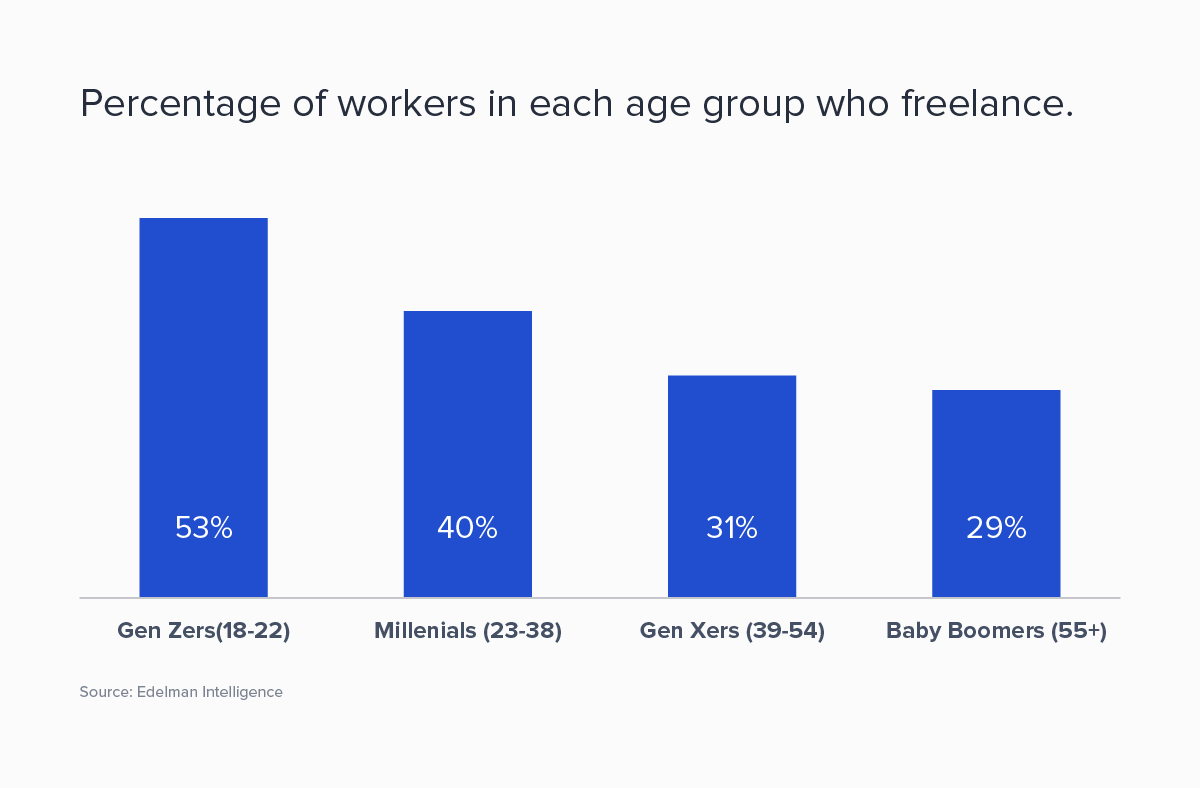Is the Talent Economy Abolishing Retirement?
authors are vetted experts in their fields and write on topics in which they are extremely knowledgeable. All of our content is peer reviewed and validated by world-class professionals.

- Older Americans are continuing to work longer: By 2026, 30% of people aged 65-74 will be in the workforce.
- With the average life expectancy approaching 86 years, people need to work longer to financially support themselves.
- Older Americans are freelancing as a transition between traditional work and full-time retirement.
- Visit Staffing.com's homepage for more.
A generation ago, retirement was a milestone. Companies gifted gold watches, families threw parties, and couples planned cruises.
In 2019, the last of the Baby Boomers (born between 1946 and 1964) reached the age of 55, but they aren’t slowing down. An increasing number are eschewing traditional retirement and continuing to work. In fact, workforce participation rates for people 65 years and older have been steadily rising for decades. By 2026, the participation rate for people aged 65-74 is projected to be 30.2%, almost double what it was in 1996 (see image below).

In other words, retirement is becoming an old-fashioned idea. In its place, Baby Boomers are becoming part of the talent economy.

The rise of the talent economy and its enabling technology are certainly empowering this population to continue working. However, the question of motivation remains: Is this generation choosing freelance work to have greater work-life balance, or is ageism in the workforce making freelancing their only option?
The Benefits of Working Longer
The Social Security board of trustees estimates an average 65-year-old man today can expect to live 19 more years, and a 65-year-old woman can expect to live 21 more years. That’s a lot of time for golfing and playing bridge. Instead, many older workers view freelancing as a transition between full-time employment and full-time retirement, including 69% of freelancers 65 and older.
Living longer is also expensive, and continuing to work postpones the date at which people have to begin living off retirement savings. Rather than extending their full-time careers, however, older Americans are choosing to freelance. The LIMRA Secure Retirement Institute reported more than one-quarter of people aged 55-71 who plan to retire soon from traditional full-time jobs will continue to work part-time in order to support themselves financially.
Ageism in the Traditional Workforce
Being part of a freelance workforce is not always a first choice. In fact, more than half of older US workers are pushed out of full-time jobs before they choose to retire. Consider that 28% of stable, longtime employees sustain at least one layoff between turning 50 and retirement. People between the ages of 50-60 are often working to save for retirement, therefore layoffs at this point can be especially damaging to their finances. Unable to afford retirement, they turn to freelancing.
Ageism is still prevalent in many traditional companies; two-thirds of respondents in a recent AARP study had experienced ageism. A bias for younger employees is seen not only in the tech sector, with seven out of 18 top Silicon Valley companies having a median age of 30 or younger, but also in non-tech sectors. For example, callback rates for jobs at the San Francisco Federal Reserve Bank were lower for older applicants, with women having lower callback rates than men. (Workers believe they are most likely to experience age discrimination in the workplace at age 51.)
It’s unclear exactly why ageism persists, though common assumptions include older workers are less skilled in technology, will demand higher salaries because of their years of experience, and will incur higher health-related expenses.
The Talent Economy Is the Great Equalizer
Limiting job candidates to the under-50 workforce is becoming increasingly outdated. The over-50 talent pool is the fastest-growing freelancer sector in the US workforce, as more and more Baby Boomers are finding work in the talent economy. They’re a talented group: Recently, Baby Boomers earned the most money, took on the most gigs, and garnered the highest ratings on Wonolo, a freelance workforce platform.
The talent economy is the great equalizer. It focuses on a person’s marketable skills and experience and provides multiple avenues to leverage those skills for income. By its very nature, the talent economy creates opportunities not limited by race, age, gender, or geography. Technology is the unbiased delivery system that connects those who have a need with those who have the necessary skill set. It’s the purest form of exchange of services and expertise for income.
The growing freelance movement is forcing enterprise organizations to rethink how work gets done. It’s just a small part of a bigger, global digital transformation, often referred to as the Fourth Industrial Revolution. Technology is removing bias and elevating us to what we do best: build relationships, think critically, innovate, and create. For all generations, it’s a milestone.
